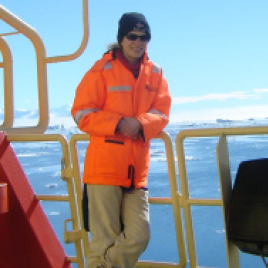The Biologeochemical Fingerprint of Melting Ice
Kate Hendry | University of Bristol
Abstract: The high-latitude regions are experiencing some of the most rapid environmental changes observed anywhere in recent decades. The Greenland Ice Sheet, for example, is experiencing signi cant mass loss largely through surface melting but also via ice discharge at glacier fronts. As well as changing freshwater budgets and ocean buoyancy, there has been increasing focus on the role of meltwater in supplying nutrients to marine systems. The extent to which these nutrients reach the coastal oceans and, eventually, mix via boundary currents o the shelf and into the open ocean is poorly constrained and a matter of lively debate. Here, I'll take a holistic, multi-disciplinary approach to quantifying the in uence of glacial meltwaters and other processes on biogeochemical cycling in high-latitude margins.
Kate Hendry has an undergraduate degree in Natural Sciences from Cambridge University, a PhD in Antarctic biogeochemistry from Oxford University (2008) and has worked as a postdoctoral fellow at Woods Hole Oceanographic Institution, and as a Research Lecturer at Cardi University. Since 2013, she has been a Royal Society University Research Fellow at the University of Bristol. She is a director of Antarctic Science Ltd, and sits on the UK National Committee of Antarctic Research. Kate was awarded the European Association of Geochemistry Hautermans Award for Early Career Geochemistry in 2016. This talk will focus on results from her European Research Council (ERC) Starting Grant for the project ‘ICY-LAB’.


